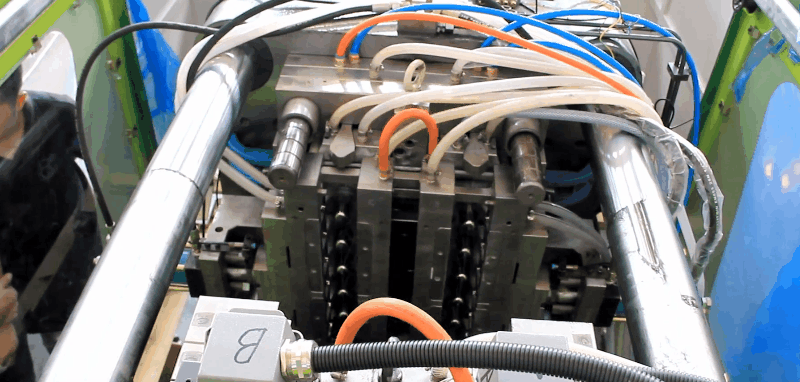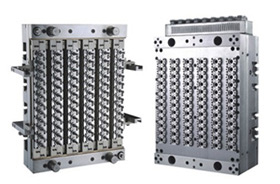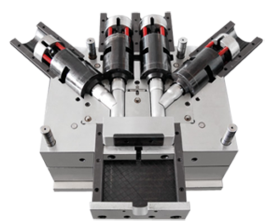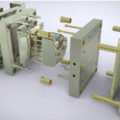Mold Shrinkage in Injection Moulding
– By Zafar Kamal
Most nonplastic materials show relatively small changes in linear expansion and contraction under the influence of the temperature variation. On the other hand, most plastics exhibits considerable dimensional change due to environmental changes.
Perhaps the most significant change in the plastics dimensions occurs with the phase change, causing the greatest concern to mold makers and the mold designers. It also represents a major problem to the injection molder. When going through the normal cycle of solid state to plastic melt and back to solid state plastics exhibit dimensional changes which vary widely from one resin to another.
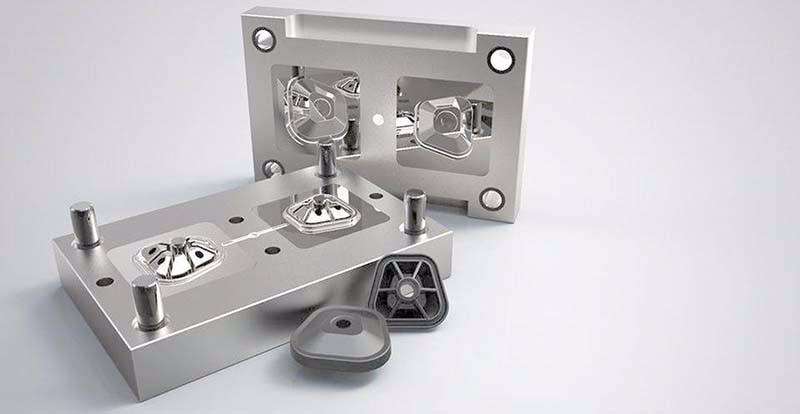
There is no practical way of accurately predicting the exact shrinkage allowance for any plastic material. A concerted effort has been expended during the past few years, particularly by the raw material suppliers to develop meaningful and useful data on the subject of the shrinkage. ASTM ha set up a specification for determining mold shrinkage (D-955). But as with most laboratory determinations, the date developed has little or meaning to the molder since the parts he must produce rarely conform to the dimensions of the test bars or discs. Also, other variables such as gating, part geometry, variations in the wall thickness, and the efficiency of the machine itself, can make this data not only meaningless but also misleading.
Most plastics engineers must rely on their past experience both with the material under consideration and the type of part they are designing for, in order to closely approximate the shrinkage allowance to be made for a particular mold design.
A certain amount of shrinkage is inevitable in any process that involves cooling of a material from an elevated temperature. Mold shrinkage must be taken into account when a mold is designed by allowing for a calculated shrinkage based on the properties of the resins.
The injection molder can prevent excessive shrinking, which will make close tolerance impossible, by controlling the operation conditions, such as molding at the lower injection temperatures, running a cold mold, or by packing the mold.
Packing can be achieved by molding at either moderate melt temperatures and high melt pressures. However, excessive temperature or pressure may cause a mold to flash. Another means of reducing mold shrinkage is through the use of the high melt pressure and extended injection time, allowing additional resin to flow into the mold as the material in the mold cools and shrinks, again packing the mold as much as possible, short of causing the mold to flash or the part to stick in the cavity.
Post Mold Shrinkage and Warping
Basically the shrinkage in the mold is due to the thermal changes in the plastic while it is in the mold. The Post-mold shrinkage refers to the contraction of the solidified and ejected molded part due principally to relaxation of molded-in stresses, which is generally completed within one day after part ejection.
Although in many injection-molded parts shrinkage does not play too important a role, in certain applications it can present a troublesome problem for the molder. In closures and in pieces which are to become components of an assembly, too much or too little shrinkage can be a valid cause for the rejection of the part. In addition, uneven shrinkage causes warpage of the molded items. Nonuniform shrinkage of a molded part after it is ejected from the mold, its bending or twisting out of shape, alters not only its dimensions but also its contours and angles. Warpage occurs mainly in large and the flat molded articles and, though undesirable in any molding, is particularly so in such items as container covers, closures, or drainboards.
When a part is ejected from the mold , it assumes its natural shape by relieving the stresses imposed upon it while being shaped in the mold in the viscous state. The problem for the molder and also a difficult one is to minimized the internal stresses which the part may later remember, and relieve them when cooling it to room temperature. The locked-in stresses are generated in the mold by such operating conditions as excessive molding pressures, uneven mold cooling, or too low a melt temperature.
There is no single, clear-cut remedy for the warpage, the internal stresses set up in the molded part during in-mold cooling may be reduced by adjusting mold conditions, redesigning the part of the mold, switching to another resin, or some combination to these steps. Generally the best resistance to warpage results from maximum melt temperature, high mold temperature, minimum injection pressure, and short injection time.
Molding at high melt temperature tends to diminish the elastic memory of the resin and thus reduce the tendency to create the stresses that might cause warping. Running a warm mold allows stresses to relieve themselves before the melt sets or freezes, and will also reduce the tendency to warpage. In addition, uniform mold temperatures are a must to produce warp-free parts.
Part design and mold design have much to do with the warping. Warpage may be increased for instance, if the part has greatly dissimilar wall sections, if the gate is located in a thin section of the part, if the sprue is poorly placed, or if the mold is build up of inner surfaces with unequal heat dissipation.


